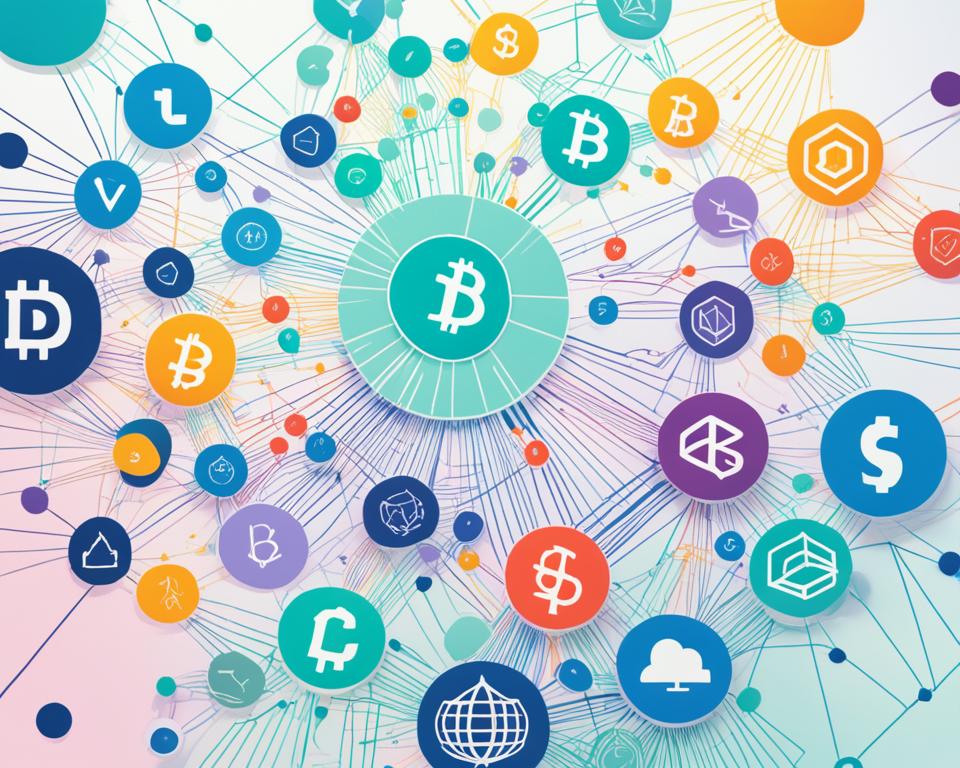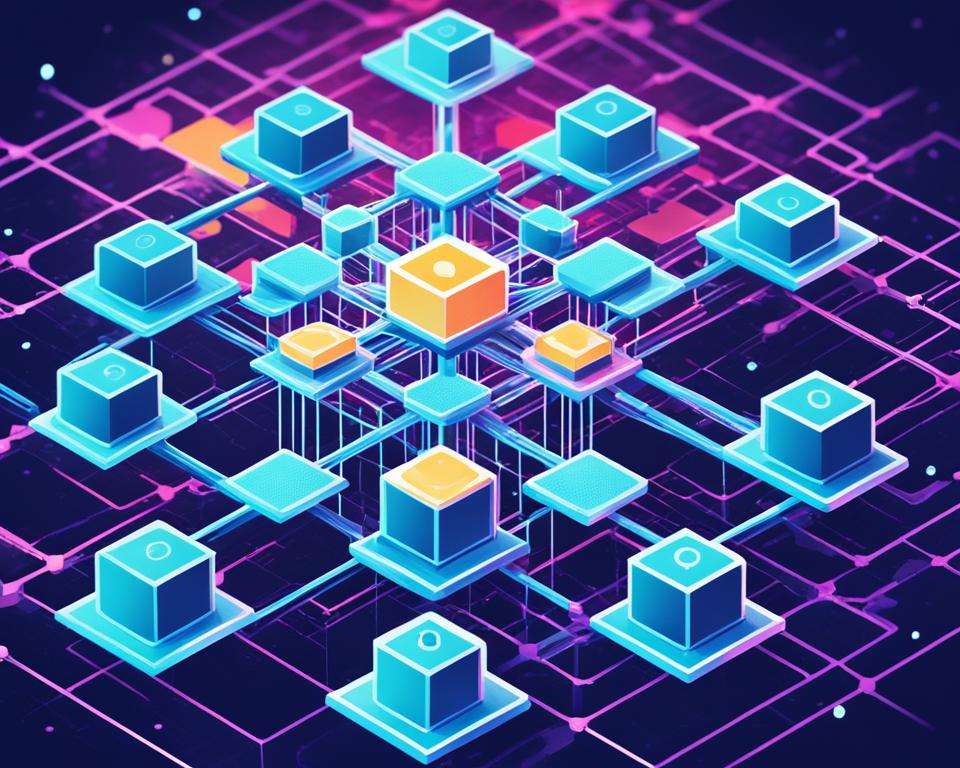Tokenization: Unlocking the Power of Data Transformation

As you navigate the ever-evolving landscape of data processing, one fundamental technique stands out: tokenization. This powerful tool, rooted in the principles of natural language processing (NLP), transforms raw text into meaningful units, known as tokens. This process of breaking down text into smaller, more manageable pieces is crucial for a wide range of data processing tasks, from sentiment analysis to text summarization.
By unlocking the power of tokenization, you can harness the full potential of your data and gain valuable insights that drive business success. Whether you’re working with customer feedback, market research, or any other form of unstructured text, tokenization can help you uncover hidden patterns, extract key insights, and make more informed decisions.
Key Takeaways
- Tokenization is a fundamental technique in natural language processing (NLP) that transforms raw text into meaningful units, known as tokens.
- This process of breaking down text into smaller, more manageable pieces is crucial for a wide range of data processing tasks, from sentiment analysis to text summarization.
- By unlocking the power of tokenization, you can harness the full potential of your data and gain valuable insights that drive business success.
- Tokenization lays the foundation for advanced NLP tasks, enabling more accurate and efficient text analysis.
- Mastering tokenization can lead to enhanced information retrieval, streamlined text mining, and improved decision-making based on unstructured data.
Understanding Tokenization and Its Importance
Tokenization is the fundamental process of breaking down text into smaller, more manageable units called tokens. These tokens can be individual words, characters, or even subword units, depending on the specific tokenization technique employed. This crucial step in data processing lays the foundation for a wide range of natural language processing (NLP) tasks, such as sentiment analysis, text summarization, and machine translation.
What is Tokenization?
At its core, tokenization involves the transformation of raw text into a structured format, where the text is segmented into meaningful units. This process can be achieved through various methods, including word segmentation, text normalization, and lexical analysis. The resulting tokens can then be used as the building blocks for more advanced NLP algorithms and applications.
Why Tokenization Matters in Data Processing
Tokenization is a crucial step in data processing because it lays the foundation for a wide range of analytical tasks. By breaking down text into smaller, more manageable units, tokenization enables efficient text normalization, subword tokenization, and whitespace tokenization. These techniques are essential for tasks like sentiment analysis, where the sentiment of individual words or phrases must be accurately captured and interpreted.
Applications of Tokenization Across Industries
The applications of tokenization span a diverse range of industries and sectors, from e-commerce and finance to healthcare and social media. In e-commerce, for example, tokenization is used to analyze customer reviews and feedback, providing valuable insights into product sentiment and user experience. In the financial industry, tokenization is instrumental in processing and analyzing textual data related to financial reports, news articles, and customer communications, enabling more informed decision-making.

Tokenization Techniques and Approaches
When it comes to tokenization, there are several techniques and approaches that can be employed, each with its own strengths and applications. From the straightforward whitespace tokenization to the more advanced subword tokenization and byte-pair encoding (BPE), the choice of tokenization method often depends on the specific requirements of your data processing tasks.
Whitespace Tokenization
One of the most basic and widely used tokenization techniques is whitespace tokenization. This approach divides the text into tokens based on the presence of whitespace characters, such as spaces or tabs. This method is simple to implement and can be effective for basic text processing tasks. However, it may not be suitable for more complex languages or specialized domains, where a more sophisticated tokenization approach may be required.
Subword Tokenization
In contrast to whitespace tokenization, subword tokenization techniques aim to break down words into smaller, more manageable units, known as subwords. This approach can be particularly useful for handling out-of-vocabulary (OOV) words, as well as for languages with complex morphology. Techniques like character-level tokenization, word-piece tokenization, and sentencepiece fall under the category of subword tokenization.
Byte-Pair Encoding (BPE)
Byte-pair encoding (BPE) is a popular subword tokenization technique that learns a vocabulary of subword units from the training data. It starts with a vocabulary of individual characters and iteratively replaces the most frequent pair of consecutive characters with a new subword symbol, effectively creating a compact vocabulary that can represent the original text. This approach has been widely adopted in various natural language processing tasks, as it can effectively handle rare and unknown words.
By understanding the different tokenization techniques and their applications, you can choose the most appropriate approach for your data processing needs, whether it’s enhancing natural language processing, improving information retrieval, or streamlining text analysis and mining.

Tokenization: Unleashing the Potential of Your Data
By harnessing the power of tokenization, you can unlock the full potential of your data and drive significant improvements in a wide range of applications. Tokenization is a crucial enabler for enhancing natural language processing (NLP) tasks, such as sentiment analysis, text summarization, and machine translation. By breaking down text into meaningful units, tokenization allows for more accurate and efficient application of NLP algorithms, leading to better understanding and interpretation of unstructured data.
Enhancing Natural Language Processing (NLP)
Tokenization is a fundamental step in the NLP pipeline, as it provides the building blocks for subsequent text analysis and processing tasks. By dividing text into tokens, whether at the word, subword, or character level, you can apply advanced text analysis techniques to gain deeper insights from your data. This enables more accurate sentiment analysis, more precise language translation, and more effective text summarization, ultimately unlocking the full potential of your unstructured data.
Improving Information Retrieval Systems
Tokenization also plays a crucial role in information retrieval systems, such as search engines and recommendation algorithms. By breaking down queries and documents into tokens, these systems can more effectively index, match, and retrieve relevant information, providing users with more accurate and relevant results. This increased precision and efficiency in text mining and information retrieval can significantly enhance the overall user experience and drive better decision-making.
Streamlining Text Analysis and Mining
Beyond NLP and information retrieval, tokenization is a fundamental enabler for a wide range of text analysis and text mining applications. By breaking down text into manageable units, you can more effectively apply techniques like clustering, topic modeling, and named entity recognition, unlocking valuable insights from your data. This streamlined approach to text processing and analysis can lead to improved business intelligence, better customer segmentation, and more informed decision-making.
Conclusion
In the world of data-driven decision-making, tokenization has emerged as a transformative technique that unlocks the true potential of your textual data. By breaking down raw text into structured, machine-readable units, tokenization paves the way for enhanced natural language processing, improved information retrieval, and streamlined text analysis and mining.
As you’ve explored throughout this article, the power of tokenization lies in its ability to transform unstructured text into a format that can be seamlessly integrated into your data processing workflows. Whether you’re working with customer feedback, product reviews, or market research reports, tokenization enables you to extract valuable insights that drive your business forward.
By mastering the various tokenization techniques and understanding their specific applications, you can tailor your approach to best suit your unique data processing needs. From whitespace tokenization to subword tokenization and byte-pair encoding, the possibilities are endless when it comes to unlocking the true power of your data transformation.
As you continue your journey in the realm of data-driven decision-making, remember that tokenization is a crucial foundational step that enables you to extract the most valuable insights from your textual data. Embrace this powerful technique and unleash the full potential of your data to revolutionize your business and stay ahead of the competition.




